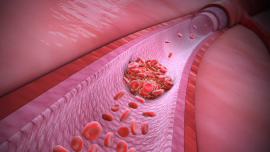Clone Tuần hoàn máu và lưu thông máu
version:
1
status:
0
type:
Dạng bài Single model
category:
7
grade:
7
Image:

jsonString:
{"version":"1","language":"","lessonId":"31737","lessonName":"Tuần hoàn máu và lưu thông máu","type":11,"defaultModel":"","assets":[{"sequence":0,"metadata":"","uri":"","url":"https://educationxr.vn/edu-file/lesson/asset/8d816d3664ad673_eonf9c6_Level_4_0.glb","displayName":"8d816d3664ad673_eonf9c6_Level_4_0 0","id":"0","institutionId":"","type":0,"materialData":{"textureUrl":"","materialAsset":{"name":"","materialAssetpath":"","textureUrl":""}},"childMaterialDatas":[]},{"sequence":0,"metadata":"","uri":"","url":"https://educationxr.vn/edu-file/lesson/unity/realistic_human_heart.glb","displayName":"realistic_human_heart 0","id":"1","institutionId":"","type":0,"materialData":{"textureUrl":"","materialAsset":{"name":"","materialAssetpath":"","textureUrl":""}},"childMaterialDatas":[]}],"annotations":[{"id":"44c2c4a6-e091-48a3-b159-37f4822b2cb7","title":"Bạch cầu hạt","owner":"Transform/Blood Vessel Structure/Leucocyte Nucleus","ownerId":0,"targetPosition":[-92.18901062011719,465.6116943359375,-215.6324462890625],"activities":[],"asset":"0","image360":""},{"id":"7fe8207d-b421-44a3-9069-4349229efe8e","title":"Bạch cầu đơn nhân","owner":"Transform/Blood Vessel Structure/Leucocyte Platelets","ownerId":0,"targetPosition":[-171.30335998535157,406.8280029296875,-221.09341430664063],"activities":[],"asset":"0","image360":""},{"id":"1007285e-e3bc-4c97-b410-cb38a80dda85","title":"Huyết tương","owner":"Transform/Blood Vessel Structure/Nuclei","ownerId":0,"targetPosition":[-115.93374633789063,394.826416015625,-704.8093872070313],"activities":[],"asset":"0","image360":""},{"id":"a7a2141b-9136-48e2-a1c1-2fa4edab79f5","title":"","owner":"Transform/Blood Vessel Structure/Nuclei/NucleiShape","ownerId":0,"targetPosition":[-44.546417236328128,188.5484619140625,-946.719482421875],"activities":[],"asset":"0","image360":""},{"id":"f1d44c66-4e91-44ac-aaaf-075afa7f54f8","title":"Huyết tương","owner":"Transform/Blood Vessel Structure/Nuclei/NucleiShape","ownerId":0,"targetPosition":[-128.910888671875,206.29055786132813,-908.621826171875],"activities":[],"asset":"0","image360":""},{"id":"54b457af-371f-4b1f-b74e-5556d27a32a1","title":"Tế bào hồng cầu","owner":"Transform/Blood Vessel Structure/Erythrocytes","ownerId":0,"targetPosition":[-187.4942169189453,419.2551574707031,-1330.4764404296875],"activities":[],"asset":"0","image360":""},{"id":"7be6ae3e-9091-40db-8fbc-31e0de3eaa1e","title":"Tiểu cầu","owner":"Transform/Blood Vessel Structure/Thrombocytes","ownerId":0,"targetPosition":[-287.9896240234375,401.6661071777344,-1069.88232421875],"activities":[],"asset":"0","image360":""},{"id":"f10b83b3-a2b6-44a2-81c4-a8afb4a8abf2","title":"Tế bào nội mô","owner":"defaultScene/Transform/Blood Vessel Structure/Endothel","ownerId":0,"targetPosition":[-366.684814453125,322.5435791015625,-852.5392456054688],"activities":[],"asset":"0","image360":""}],"activities":[{"id":"8596","title":"Vai trò của tim và hệ mạch","thumbnail":{"remote":"https://educationxr.vn/edu-file/lesson/unity/8596.jpg","local":""},"type":7,"score":0.0,"asset":"1","data":{"description":"","url":"","is360":false,"timelimit":0.0,"question":"","answers":[],"location":{"remote":"https://educationxr.vn/edu-file/lesson/unity/Vaitrocuatimvahemach859620221017113243.wav","local":"/idbfs/50462e7c1fe8f9a7d753f3b7f91ea887/31737/8596/Vaitrocuatimvahemach859620221017113243.wav"},"narration":{"remote":"","local":"/idbfs/50462e7c1fe8f9a7d753f3b7f91ea887/31737/8596/Vaitrocuatimvahemach859620221017113243.wav"},"textToSpeech":{"voidId":"Nữ miền Bắc","languageCode":"Tốc độ 0.7","text":"Vai trò của tim và hệ mạch trong sự tuần hoàn máu:\n\n+ Tim: co bóp tạo lực đẩy máu đi qua các hệ mạch\n\n+ Hệ mạch: dẫn máu từ tim (tâm thất) tới các tế bào của cơ thể, rồi lại từ các tế bào trở về tim (tâm nhĩ)\n\n→ Hệ tuần hoàn giúp lưu chuyển máu trong toàn cơ thể"},"target":"Sketchfab_model","view":{"camera":{"position":[0.0031569604761898519,0.04219568520784378,-3.2355496883392336],"orientation":[0.000348266854416579,0.0003798125544562936,-0.00011478871601866558],"scale":{"x":0.0,"y":0.0,"z":0.0}}},"annotation":0,"annotations":[],"visibleAnimation":{"Animations":[]},"LoopAnimation":{"Animations":[]},"removedAnimation":{"Animations":[]},"removedStructure":{"Structures":[]},"models":[],"image360":{"id":"","name":"","url":"","thumbnail":"","annotationIds":[],"activityIds":[],"activityFlagIds":[],"view":{"camera":{"position":[],"orientation":[],"scale":{"x":0.0,"y":0.0,"z":0.0}}},"models":[],"blockCode":{"remote":"","local":""}},"quizzes":[]},"blockCode":{"remote":"","local":""}},{"id":"3412","title":"Chức năng vận chuyển","thumbnail":{"remote":"https://educationxr.vn/edu-file/lesson/unity/3412.jpg","local":""},"type":7,"score":0.0,"asset":"0","data":{"description":"","url":"","is360":false,"timelimit":0.0,"question":"","answers":[],"location":{"remote":"https://educationxr.vn/edu-file/lesson/unity/Chucnangvanchuyen3412.wav","local":"/idbfs/50462e7c1fe8f9a7d753f3b7f91ea887/31737/3412/Chucnangvanchuyen3412.wav"},"narration":{"remote":"","local":"/idbfs/50462e7c1fe8f9a7d753f3b7f91ea887/31737/3412/Chucnangvanchuyen3412.wav"},"textToSpeech":{"voidId":"Nữ miền Bắc","languageCode":"Tốc độ 1","text":"Máu có chức năng vận chuyển:\nChất dinh dưỡng: Các thực phẩm sẽ được ly giải thành các chất dinh dưỡng như acid amin, glucose, acid béo, các chất điện giải, các vitamin và nước khi đi từ dạ dày đến ruột. Ruột hấp thu các chất dinh dưỡng này vào máu. Sau đó, máu vận chuyển đến mô, để mô tổng hợp các chất cần thiết cho hoạt động sống của tế bào nói riêng và cơ thể nói chung.\nChất đào thải: Khi các tế bào chuyển hóa xong, sẽ đào thải các chất như CO2. H+ và NH3 và gan đào thải ure. Các chất đào thải này đi vào máu, máu vận chuyển đến thận, phổi để bài tiết ra ngoài.\nOxy và Cacbon dioxide: Oxy từ không khí khi hít thở vào phổi sẽ khuếch tán vào máu, di chuyển đến tim. Sau đó tim co bóp để bơm máu giàu oxy qua động mạch đến toàn bộ cơ thể. Sau khi các mô trong cơ thể sử dụng O2 sẽ đào thải CO2. Lúc này CO2, theo đường máu tĩnh mạch trở về tim bơm lên phổi và thở ra ngoài.\nHormone: các tuyến nội tiết nằm rải rác khắp cơ thể giải phóng hormone vào máu, đưa chúng đến các tế bào đích ở xa."},"target":"Transform/Blood Vessel Structure","view":{"camera":{"position":[-975.0938110351563,650.927001953125,-1483.0672607421875],"orientation":[22.324060440063478,25.799182891845704,354.8366394042969],"scale":{"x":0.0,"y":0.0,"z":0.0}}},"annotation":0,"annotations":[],"visibleAnimation":{"Animations":[]},"LoopAnimation":{"Animations":[]},"removedAnimation":{"Animations":[]},"removedStructure":{"Structures":[]},"models":[],"image360":{"id":"","name":"","url":"","thumbnail":"","annotationIds":[],"activityIds":[],"activityFlagIds":[],"view":{"camera":{"position":[],"orientation":[],"scale":{"x":0.0,"y":0.0,"z":0.0}}},"models":[],"blockCode":{"remote":"","local":""}},"quizzes":[]},"blockCode":{"remote":"","local":""}},{"id":"3515","title":"Câu hỏi 2","thumbnail":{"remote":"https://educationxr.vn/edu-file/lesson/unity/3515.jpg","local":""},"type":5,"score":0.0,"asset":"1","data":{"description":"","url":"","is360":false,"timelimit":0.0,"question":"Hệ mạch dẫn máu từ :","answers":[{"text":"Tâm nhĩ","isCorrect":false},{"text":"Tâm cầu","isCorrect":false},{"text":"Tâm thất","isCorrect":true},{"text":"Tâm tròn","isCorrect":false}],"location":{"remote":"","local":""},"narration":{"remote":"","local":""},"textToSpeech":{"voidId":"","languageCode":"","text":""},"target":"","view":{"camera":{"position":[0.00013985554687678814,0.04534737393260002,-3.242448329925537],"orientation":[0.00038020400097593665,0.00041464247624389827,-0.000125315084005706],"scale":{"x":0.0,"y":0.0,"z":0.0}}},"annotation":0,"annotations":[],"visibleAnimation":{"Animations":[]},"LoopAnimation":{"Animations":[]},"removedAnimation":{"Animations":[]},"removedStructure":{"Structures":[]},"models":[],"image360":{"id":"","name":"","url":"","thumbnail":"","annotationIds":[],"activityIds":[],"activityFlagIds":[],"view":{"camera":{"position":[],"orientation":[],"scale":{"x":0.0,"y":0.0,"z":0.0}}},"models":[],"blockCode":{"remote":"","local":""}},"quizzes":[]},"blockCode":{"remote":"","local":""}},{"id":"1928","title":"Vòng tuần hoàn của máu","thumbnail":{"remote":"https://educationxr.vn/edu-file/lesson/unity/1928.jpg","local":""},"type":11,"score":0.0,"asset":"0","data":{"description":"","url":"https://educationxr.vn/edu-file/lesson/unity/SGKSinh8hinh16.1.jpg.jpg","is360":false,"timelimit":0.0,"question":"","answers":[],"location":{"remote":"https://educationxr.vn/edu-file/lesson/unity/1928.wav","local":"/idbfs/6d16dec1a463c5e5198e7a8abdc96e98/3291/1928"},"narration":{"remote":"","local":""},"textToSpeech":{"voidId":"Nữ miền Bắc","languageCode":"Tốc độ 0.7","text":"Máu đi trong cơ thể thông qua 2 vòng tuần hoàn: là vòng tuần hoàn lớn và vòng tuần hoàn nhỏ.\n- Vòng tuần hoàn nhỏ: Máu đi từ tâm thất phải theo động mạch phổi đến 2 lá phổi, theo tĩnh mạch phổi về tâm nhĩ trái.\n\n- Vòng tuần hoàn lớn: Máu đi từ tâm thất trái theo động mạch cảnh đến các tế bào rồi theo tĩnh mạch cảnh dưới rồi về tâm nhĩ phải."},"target":"Transform/Blood Vessel Structure","view":{"camera":{"position":[-295.3878479003906,1126.2496337890625,-1448.4686279296875],"orientation":[39.4632453918457,356.1386413574219,5.2954301834106449],"scale":{"x":0.0,"y":0.0,"z":0.0}}},"annotation":0,"annotations":[],"visibleAnimation":{"Animations":[]},"LoopAnimation":{"Animations":[]},"removedAnimation":{"Animations":[]},"removedStructure":{"Structures":[]},"models":[],"image360":{"id":"","name":"","url":"","thumbnail":"","annotationIds":[],"activityIds":[],"activityFlagIds":[],"view":{"camera":{"position":[],"orientation":[],"scale":{"x":0.0,"y":0.0,"z":0.0}}},"models":[],"blockCode":{"remote":"","local":""}},"quizzes":[]},"blockCode":{"remote":"","local":""}},{"id":"1276","title":"Câu hỏi 1","thumbnail":{"remote":"https://educationxr.vn/edu-file/lesson/unity/1276.jpg","local":""},"type":5,"score":0.0,"asset":"0","data":{"description":"","url":"","is360":false,"timelimit":0.0,"question":"Máu có bao nhiêu vòng tuần hoàn?","answers":[{"text":"1","isCorrect":false},{"text":"2","isCorrect":true},{"text":"3","isCorrect":false},{"text":"4","isCorrect":false}],"location":{"remote":"","local":""},"narration":{"remote":"","local":""},"textToSpeech":{"voidId":"","languageCode":"","text":""},"target":"Transform/Blood Vessel Structure","view":{"camera":{"position":[1122.330810546875,1084.5916748046875,-3864.8642578125],"orientation":[15.148970603942871,338.1861877441406,359.7957763671875],"scale":{"x":0.0,"y":0.0,"z":0.0}}},"annotation":0,"annotations":[],"visibleAnimation":{"Animations":[]},"LoopAnimation":{"Animations":[]},"removedAnimation":{"Animations":[]},"removedStructure":{"Structures":[]},"models":[],"image360":{"id":"","name":"","url":"","thumbnail":"","annotationIds":[],"activityIds":[],"activityFlagIds":[],"view":{"camera":{"position":[],"orientation":[],"scale":{"x":0.0,"y":0.0,"z":0.0}}},"models":[],"blockCode":{"remote":"","local":""}},"quizzes":[]},"blockCode":{"remote":"","local":""}},{"id":"9275","title":"Máu - Mô liên kết","thumbnail":{"remote":"https://educationxr.vn/edu-file/lesson/unity/9275.jpg","local":""},"type":7,"score":0.0,"asset":"0","data":{"description":"","url":"","is360":false,"timelimit":0.0,"question":"","answers":[],"location":{"remote":"https://educationxr.vn/edu-file/lesson/unity/MauMolienket927520221020111729.wav","local":"/idbfs/50462e7c1fe8f9a7d753f3b7f91ea887/31737/9275/MauMolienket927520221020111729.wav"},"narration":{"remote":"","local":"/idbfs/50462e7c1fe8f9a7d753f3b7f91ea887/31737/9275/MauMolienket927520221020111729.wav"},"textToSpeech":{"voidId":"Nữ miền Bắc","languageCode":"Tốc độ 1","text":"Máu là một trong những mô liên kết. Là một mô liên kết, nó bao gồm các tế bào và các mảnh tế bào (các yếu tố hình thành) lơ lửng trong một chất nền gian bào (huyết tương). Máu là mô lỏng duy nhất trong cơ thể có kích thước khoảng 5 lít ở người trưởng thành và chiếm 8% trọng lượng cơ thể."},"target":"Transform/Blood Vessel Structure","view":{"camera":{"position":[-693.6646118164063,900.0455322265625,-2579.640625],"orientation":[19.5614013671875,9.95129680633545,349.1629333496094],"scale":{"x":0.0,"y":0.0,"z":0.0}}},"annotation":0,"annotations":[],"visibleAnimation":{"Animations":[]},"LoopAnimation":{"Animations":[]},"removedAnimation":{"Animations":[]},"removedStructure":{"Structures":[]},"models":[],"image360":{"id":"","name":"","url":"","thumbnail":"","annotationIds":[],"activityIds":[],"activityFlagIds":[],"view":{"camera":{"position":[],"orientation":[],"scale":{"x":0.0,"y":0.0,"z":0.0}}},"models":[],"blockCode":{"remote":"","local":""}},"quizzes":[]},"blockCode":{"remote":"","local":""}}],"slides":[],"image360s":[],"lightingSettings":{"fogColor":""},"activityFlags":[],"image360CreateVer":"","image360UpdatedVer":"","upload":[{"sequence":0,"metadata":"","uri":"","url":"https://educationxr.vn/edu-file/lesson/unity/realistic_human_heart.glb","displayName":"","id":"","institutionId":"","type":1,"materialData":{"textureUrl":"","materialAsset":{"name":"","materialAssetpath":"","textureUrl":""}},"childMaterialDatas":[]}]}
Category Term:
Base Url:
educationxr.vn
isFree:
